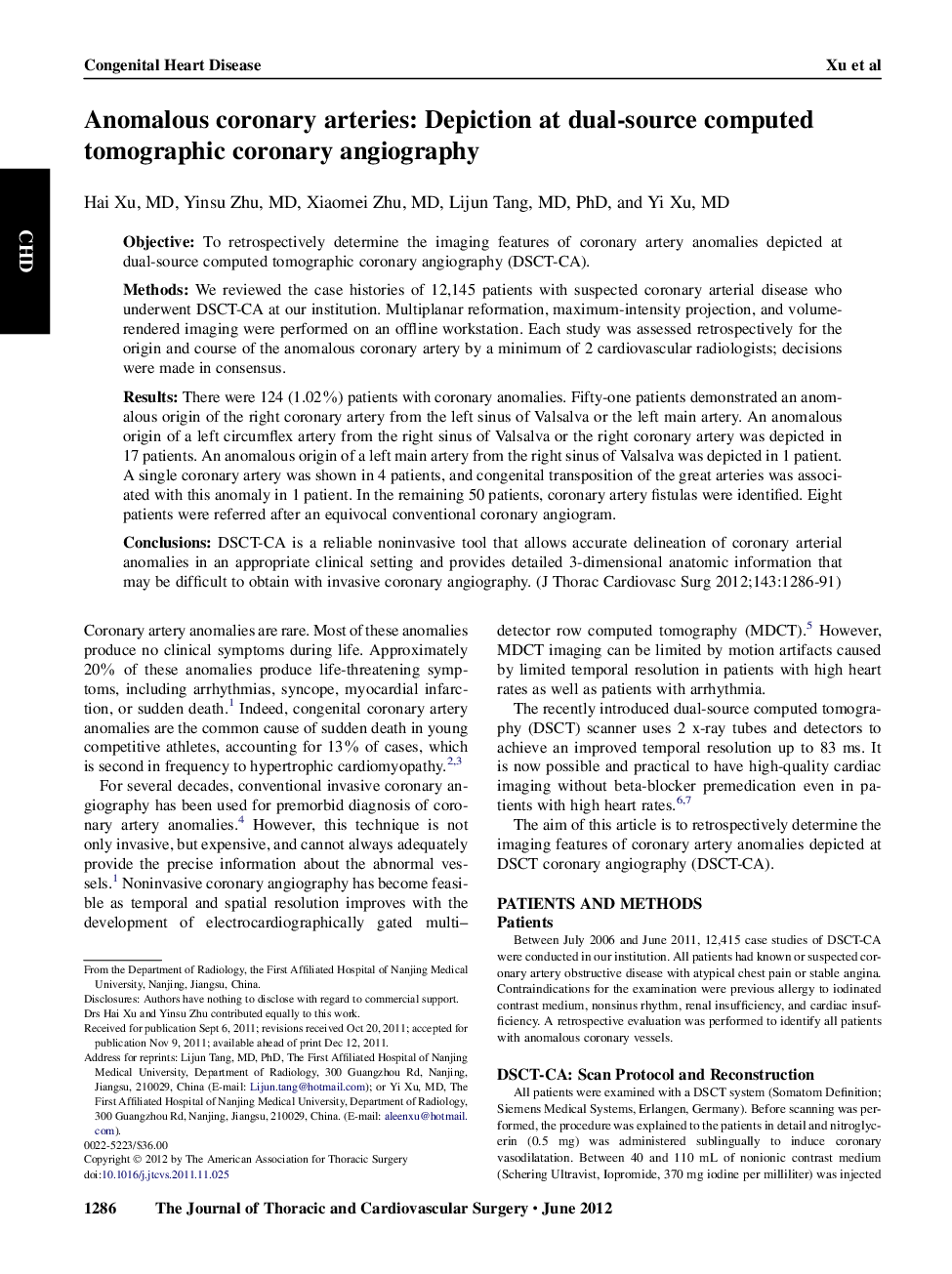| Article ID | Journal | Published Year | Pages | File Type |
|---|---|---|---|---|
| 5990839 | The Journal of Thoracic and Cardiovascular Surgery | 2012 | 6 Pages |
ObjectiveTo retrospectively determine the imaging features of coronary artery anomalies depicted at dual-source computed tomographic coronary angiography (DSCT-CA).MethodsWe reviewed the case histories of 12,145 patients with suspected coronary arterial disease who underwent DSCT-CA at our institution. Multiplanar reformation, maximum-intensity projection, and volume-rendered imaging were performed on an offline workstation. Each study was assessed retrospectively for the origin and course of the anomalous coronary artery by a minimum of 2 cardiovascular radiologists; decisions were made in consensus.ResultsThere were 124 (1.02%) patients with coronary anomalies. Fifty-one patients demonstrated an anomalous origin of the right coronary artery from the left sinus of Valsalva or the left main artery. An anomalous origin of a left circumflex artery from the right sinus of Valsalva or the right coronary artery was depicted in 17 patients. An anomalous origin of a left main artery from the right sinus of Valsalva was depicted in 1 patient. A single coronary artery was shown in 4 patients, and congenital transposition of the great arteries was associated with this anomaly in 1 patient. In the remaining 50 patients, coronary artery fistulas were identified. Eight patients were referred after an equivocal conventional coronary angiogram.ConclusionsDSCT-CA is a reliable noninvasive tool that allows accurate delineation of coronary arterial anomalies in an appropriate clinical setting and provides detailed 3-dimensional anatomic information that may be difficult to obtain with invasive coronary angiography.
